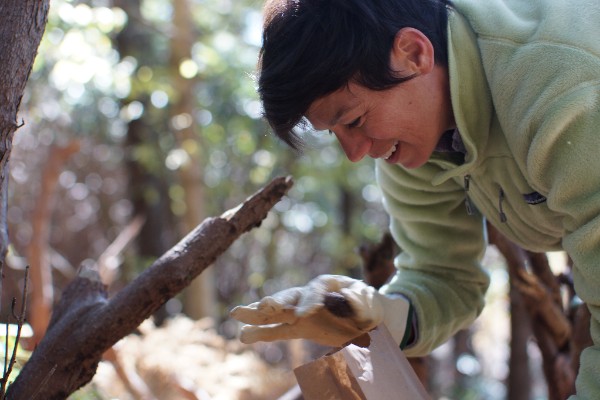On Tuesday, January 19th, members of the grass-root organization Southern Appalachian Spruce Restoration Initiative (SASRI), joined the Reserve’s staff in cleaning red spruce cones and preparing their seeds for germination in the Reserve’s Nursery Complex. Nine volunteers joined four SHR staff members, all contributing a total of 44 hours of labor, cleaning an estimated 53,000 seeds from 22 collections of red spruce cones in the Southern Blue Ridge Mountains.
High elevation spruce-fir forest ecosystems in areas like the Southern Highlands Reserve are considered by ecologists as “islands in the sky.” These pocket ecosystems, now found in fewer areas of the Blue Ridge mountains, have a unique set of native plants and animals that can thrive in these environments.
Today these forests face increasing pressures from acid rain, rising temperatures, poor management and drought. Spruce-fir forests have become the second most endangered ecosystem in the United States. These high elevation forests are home to federally endangered species like Spruce-fir moss spider and the Carolina Northern flying squirrel. Other species of conservation concern such as the Northern Saw‐whet Owl, the Black‐capped Chickadee, and several salamander species also call these forests home.
Together with The Nature Conservancy, the US Fish and Wildlife Service, the NC Wildlife Resource Commission, and the Forest Service, Southern Highlands Reserve is working to help restore red spruce in Western North Carolina. Along with other stakeholders, these core partners are developing the Southern Appalachian Spruce Restoration Initiative (SASRI), a formal partnership with a strategic action plan to restore red spruce in these endangered spruce-fir forests.
Since 2009, the Reserve has propagated red spruce seedlings in our Nursery Complex. In partnership with the NC Wildlife Resources Commission, thousands of seedlings have been reintroduced and planted in the Unicoi mountains, one area of only nine known populations of the endangered Carolina Northern flying squirrel. Reintroducing red spruce in these areas is a critical step towards preserving the endangered squirrel’s habitat.
In the spirit of the Reserve’s mission to protect and conserve native plants and their ecosystems, we are dedicated to providing the solution to the decline of spruce-fir forests. Due to our high-elevation location, our Nursery Complex is uniquely poised to grow red spruce seedlings successfully. Currently, there is no other facility in the southeastern US growing red spruce for restoration, which makes the Reserve’s ability to continue these propagation efforts for this partnership very important.

Photo credits: Gary Peebles, US Fish and Wildlife Service

